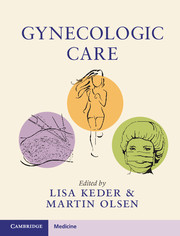Book contents
7 - Operative Laparoscopy
from Section 2 - Gynecologic Surgery
Published online by Cambridge University Press: 01 February 2018
Summary
Introduction
Operative laparoscopy has become widely used for a variety of gynecologic procedures. It is beneficial to patients due to shorter hospital stay and recovery time and lower risk of surgical and postoperative complications. This chapter will cover patient selection including contraindications to operative laparoscopy, preoperative testing, and surgical preparations. It will also cover intraoperative considerations including surgical instruments, abdominal entry and closure as well as an overview of the following procedures: ovarian cystectomy, laparoscopic salpingectomy, oophorectomy, salpingo-oophorectomy. Complications specific to operative laparoscopy will be discussed in this chapter.
Scope of the Problem
Laparoscopic surgery has important advantages over laparotomy for the treatment of gynecologic conditions. There is a lower risk of surgical injury and postoperative complications, less postoperative pain, and a shorter hospital stay. Although operative time can be longer, laparoscopy is, overall, cost-effective. A study in 1995 comparing open to laparoscopic oophorectomies found a reduction in average cost from $7,053 to $6,139, and operating time of 175 and 137 minutes for laparoscopic and open surgeries respectively. In addition, laparoscopic surgeries have been found to be associated with less adhesion formation. This also has an economic impact. Postoperative adhesions can cause complications which require hospitalizations and repeated surgeries which are costly. A study in Sweden in 1997 estimated 2,330 hospital admissions and a cost of about $13 million annually as a result of postoperative adhesions. Although operative laparoscopy has many benefits, a unique risk related to this type of surgery is the potential of cancer dissemination from a malignant adnexal mass. Rupture of a malignant mass has a negative impact on disease-free survival in ovarian cancer. Appropriate patient selection, preoperative evaluation, and physician experience are necessary for safe and effective operative laparoscopy.
Preoperative Care
Patient Selection, Special Populations
Many surgical procedures can be performed successfully with laparoscopy, but it is important to consider the patient's preference and the surgeon's experience when planning for laparoscopy. In addition, equipment must be available and affordable in the hospital setting, with an experienced surgical team. Common indications for gynecologic operative laparoscopy include pelvic mass or ovarian cyst, fibroids, sterilization, ectopic pregnancy, and endometriosis. Contraindications to laparoscopy include extensive peritoneal adhesions which preclude adequate pneumoperitoneum, acute peritonitis, ileus or intestinal obstruction, extensive hernias, and medical contraindications to pneumoperitoneum or Trendelenberg positioning.
- Type
- Chapter
- Information
- Gynecologic Care , pp. 58 - 66Publisher: Cambridge University PressPrint publication year: 2018
- 1
- Cited by



